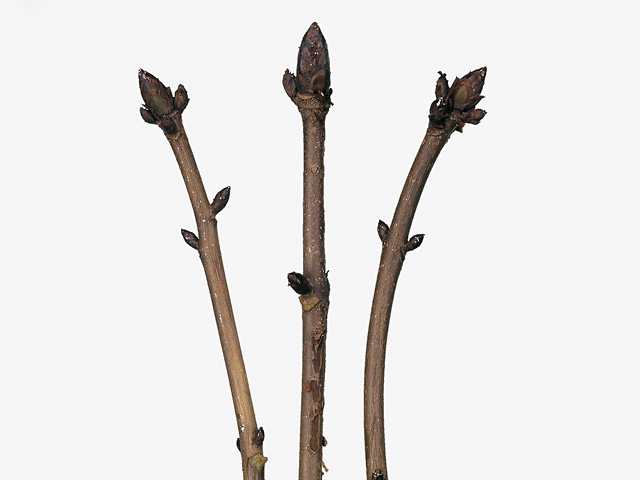Aesculus hippocastanum

| Life span | Long (over 200 years) |
| Leaf tip | Acuminate |
| Flower type | Single |
| Fruit type | Capsule |
| Fruit shape | Rounded/globose |
| Leaf margin | Serrate |
| Leaf type | Foliage leaf |
| Winter hardness | Good (USDA-zone 5, 6); Excellent (USDA-zone 1,2,3,4) |
| Flower color | White |
| Fruit color | Brown |
| Soil fertility | No poor soils |
| Leaf, general shape | Obovate (reversed egg-shaped) |
| Plant height | 10 - 20 m |
| Inflorescence | Panicle |
| Flowering month(s) | May |
| Fruit size | Large; 3,5 - 4 cm |
| Leaf duration | Deciduous |
| Flowering period | Spring flowering |
| Leaf size | 15 - 20 cm; 10 - 15 cm |
| soil pH requirement | Indifferent |
| Light conditions | Semi-shades; Sunny |
| Growth rate | Normal |
| Leaf division | Palmate |
| Inflorescence length | 15 - 20 cm |
| Inflorescence diameter | 5 - 10 cm |
| Flower sex (distribution) | Monoecious (flowers bisexual) |
| Leaf, main color | Dark green |
| Fruit, maturing period | August |
| Sensibilité au sel d'épandage | Sensitive |
| Fruit-bearing period (notable) | Late summer (September) |
| Autumn color (notable) | Yellow |
| Leaf colour, pattern | Unicolored |
| Flower color distribution | Bicolored |
| Flower, secondary color(s) | Yellow; Red |
| Moisture requirements | Moist; Wet |
The horse chestnut, scientifically known as Aesculus hippocastanum, is a majestic tree that can live for over 200 years. It has a long lifespan, making it a great addition to any landscape. The leaves of the horse chestnut are acuminate, meaning they come to a sharp point at the tip.
This tree produces single flowers in the spring, which are white in color. The flowers are arranged in a panicle, which is a branching flower cluster. After flowering, the horse chestnut develops large, rounded capsules that contain the seeds. These brown fruits mature in August and can reach a size of 3.5 to 4 cm.
The foliage of the horse chestnut is deciduous, meaning it sheds its leaves in the fall. The leaves are obovate in shape, resembling a reversed egg. They have serrate margins, creating a visually appealing texture. The leaves are a dark green color and can reach a size of 15 to 20 cm in length and 10 to 15 cm in width.
The horse chestnut tree prefers well-fertilized, moist soils. It does not thrive in poor soils, so it's important to provide it with fertile ground. Additionally, the tree is not picky about the soil pH and can tolerate various light conditions, ranging from semi-shade to sunny areas.
In terms of growth rate, the horse chestnut has a normal pace of development. It can reach a height of 10 to 20 meters when fully grown. The inflorescence, or flower cluster, of the tree can measure 15 to 20 cm in length and 5 to 10 cm in diameter.
One notable feature of the horse chestnut tree is its monoeicious flower sex distribution. This means that the flowers contain both male and female reproductive parts. The primary color of the flowers is white, but they may have secondary colors such as yellow or red.
In autumn, the horse chestnut tree displays a beautiful yellow color on its leaves. This adds a touch of warmth to the landscape as the seasons transition.
It's worth noting that the horse chestnut tree is sensitive to the salt content often found in road de-icing agents. Therefore, it's advisable to plant it in areas where the exposure to salt is minimal.
Overall, the horse chestnut is a stunning tree with its large, white flowers, distinctive foliage, and impressive stature. Its ability to tolerate various soil conditions and its long lifespan make it a sought-after choice for gardens, parks, and other landscapes. This tree truly adds elegance and beauty to any outdoor space.
Market availability index by month:
| Jan. | Feb. | Mar. | Apr. | May | Jun. | Jul. | Aug. | Sep. | Oct. | Nov. | Dec. |
|---|---|---|---|---|---|---|---|---|---|---|---|
| - | - | 4 | - | - | - | - | - | - | - | - | - |